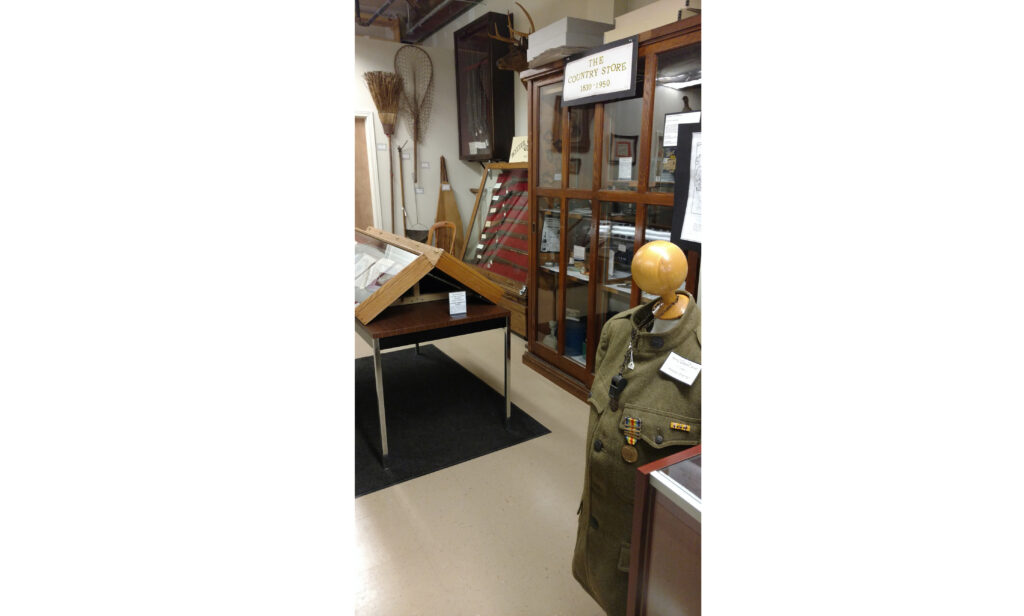Know Your Lake-History and Geography
Honeoye Valley Association (HVA) Article 2v1.2
Have you ever wondered how Honeoye Lake was formed or what peoples lived here before us? Well, to witness the unquestionably most profound event to ever affect the Finger Lakes region, you would have to go back about 2.5 million years to the beginning of the Pleistocene era, better known as the Great Ice Age. During that time, variations in the shape of our orbit and wobble on our rotational axis altered how much sunlight reached the northern hemisphere. This caused a drastic change in climate causing much of the continent to be covered by a thick, 2 mile ice sheet. At this same time, global temperatures plummeted 12-25° F and, ocean levels dropped 300 feet as the cooling climate led to the formation of a monstrous ice sheet centered over Hudson Bay. During the Great Ice Age, four (4) major ice sheet advances occurred, each one followed by a warm interglacial period. The most recent ice advance – beginning about 75,000 years ago and ending 10,000 years ago – is how Honeoye Lake and the surrounding Finger Lakes region were formed.
Under its crushing weight, this advancing ice mass carried huge amounts of rock and debris that scoured and gouged the underlying landscape. When the ice mass retreated, massive amounts of gravel, sand and silt were left behind, or carried away and later deposited by the many rivers of melting ice. The Honeoye Lake basin (like the basins of all the Finger Lakes), was gouged out of an existing river valley by the advancing ice. The deluge of melting ice filled these huge, U-shaped basins, while glacial deposits in a process known as selective linear erosion, formed dams that held back the water and so, the Finger Lakes were left behind in the wake of the retreating ice mass. Kettle lakes were formed when blocks of ice that broke away from the main ice flow, became buried in the outwash. Later, those blocks of ice melted, forming the many lakes that we see scattered throughout the Finger Lakes region. Silver Lake, Waneta and Lamoka Lakes, Mendon Ponds and Junius Ponds are examples of kettle lakes.
In its infancy, Honeoye Lake received water from melting glacial ice. Today, it gets its water from a watershed encompassing six towns in two counties: the Towns of Bristol, Canadice, Naples, Richmond, and South Bristol in Ontario County; and the Town of Springwater in Livingston County. Thirty-five streams empty into Honeoye Lake, however, the Honeoye Inlet is by far the lake’s most significant water source, draining 43% of the total Honeoye Lake Watershed. Water drains from Honeoye Lake over relatively flat ground taking about 1-year. Honeoye Lake drains north through Honeoye Creek for about 14 miles until it reaches Honeoye Falls. There, it turns westward for 8 miles then joins the Genesee river which continues north to Lake Ontario – itself a lake formed during the Great Ice Age!
The arrival of humans to the Honeoye Lake area is a relatively very recent event. Around 1000 BC, the nomadic Point Peninsula People were the first to arrive. Later came other cultures. The Owasco, descendants of the Point Peninsula People, inhabited this area around 1500 years ago. The Owasco were followed by the Senecas of the Iroquois Confederacy who are credited with introducing agriculture to the area. They also named the lake, Hannayaye, which means “finger laying there”.
After the demise of the Iroquois in 1779, people from New England began moving into the area. Some prominent families were the Pitt’s, Hunt’s and Holden’s. Over the next hundred years the towns of Richmond, Bristol, South Bristol, Livonia and Canadice were formed. Farming, lumbering, and milling were the people’s principle livelihoods. The last half of the 1800’s were typified by a stable, mostly locally born population. Around 1900 a scattering of summer cottages appeared on Honeoye Lake however, the beginning of lakeside development and the end of agriculture didn’t occur in earnest until after WWII. During the 1980’s the Honeoye Lake watershed community began mobilizing conservation efforts which continues through today. Some significant actions taken are:
- 1986 – formation of Honeoye Valley Association (HVA)
- 1987 – mechanical weed harvesting starts
- 1998 – formation of Honeoye Lake Watershed Task Force (HLWTF)
- 2006 – alum treatment of deep-water sediment
- 2007 – Honeoye Lake Watershed Management Plan initiated
- 2008 – Honeoye Lake Macrophyte Management Plan initiated
- 2015 – Honeoye Lake Inlet Restoration Project begins
- 2017-2019 Cornell/FLCC study on climate change impact to Honeoye Lake
- 2018 – Honeoye Lake Harmful Algal Bloom Action Plan initiated
- 2019 – DEC publishes Total Maximum Daily Load for Phosphorus
- 2020 – NYS DEC WQIP grant awarded for Aeration Destratification System evaluation and engineering
HVA welcomes your feedback at the email address below and encourages you to exchange viewpoints with your neighbors, family and friends. HVA has been, and will continue to be, an active partner in the future of the Honeoye Lake watershed and is committed to communicating accurate information that leads to informed opinions regarding lake management recommendations.
Watch for more articles in the coming weeks and get to Know Your Lake!
- Want to know more about the geology of the Honeoye Lake watershed, lots of good info at: https://www.honeoyelakewatershed.org/geology
- An excellent slideshow and document on glaciation and the Great Ice Age: https://fd57d705-f86c-4662-90ab-7627c560e9d2.filesusr.com/ugd/e6fc30_84175e275fb64d0da773a2fecbd5fb3a.pdf

- If you like history and want to learn more about our past, here are some colorful stories:
Richmond History-Stepping Stones to Success
Richmond History-Law and Order of the Olden Days
Richmond History-Law and Order of the Olden Days II
- For weekly lake updates, visit the HLWTF Weekly Water Quality Blog at: www.honeoyelakewatershed.org/blog
- Not familiar with HVA, or would like to learn more about us and our history, visit https://hvaweb.org/page-1723989
We’d love to hear your feedback, questions and comments. Please email us at: honeoyecontact@gmail.com